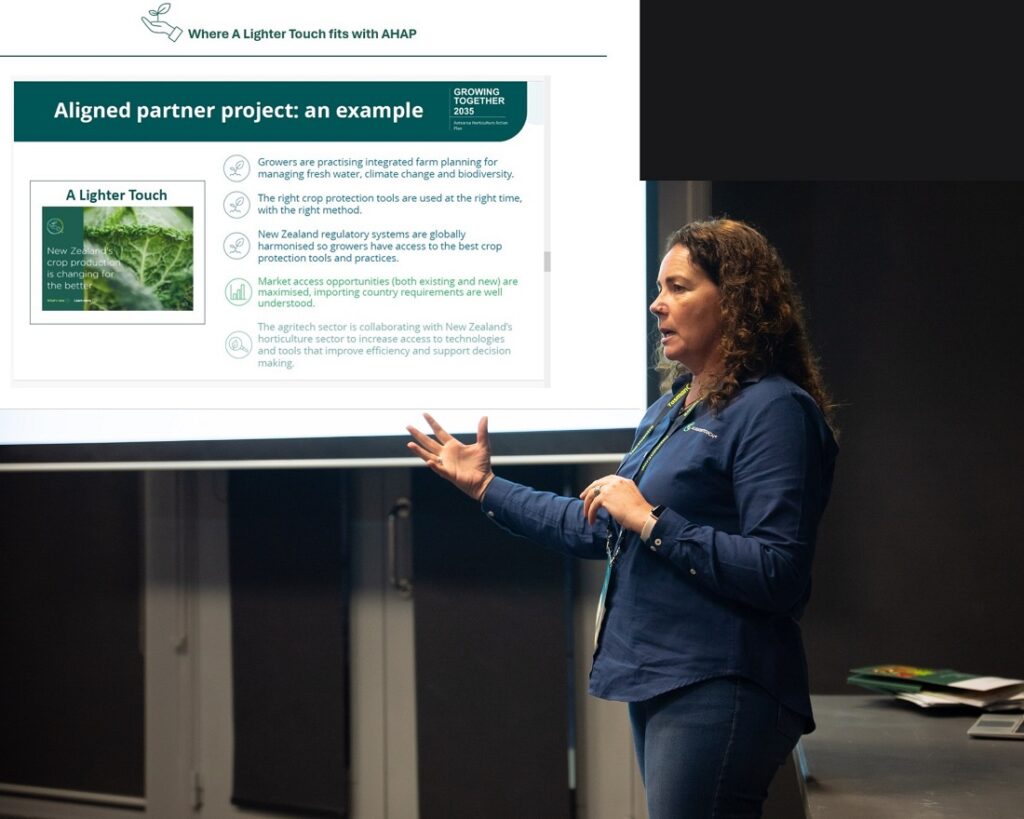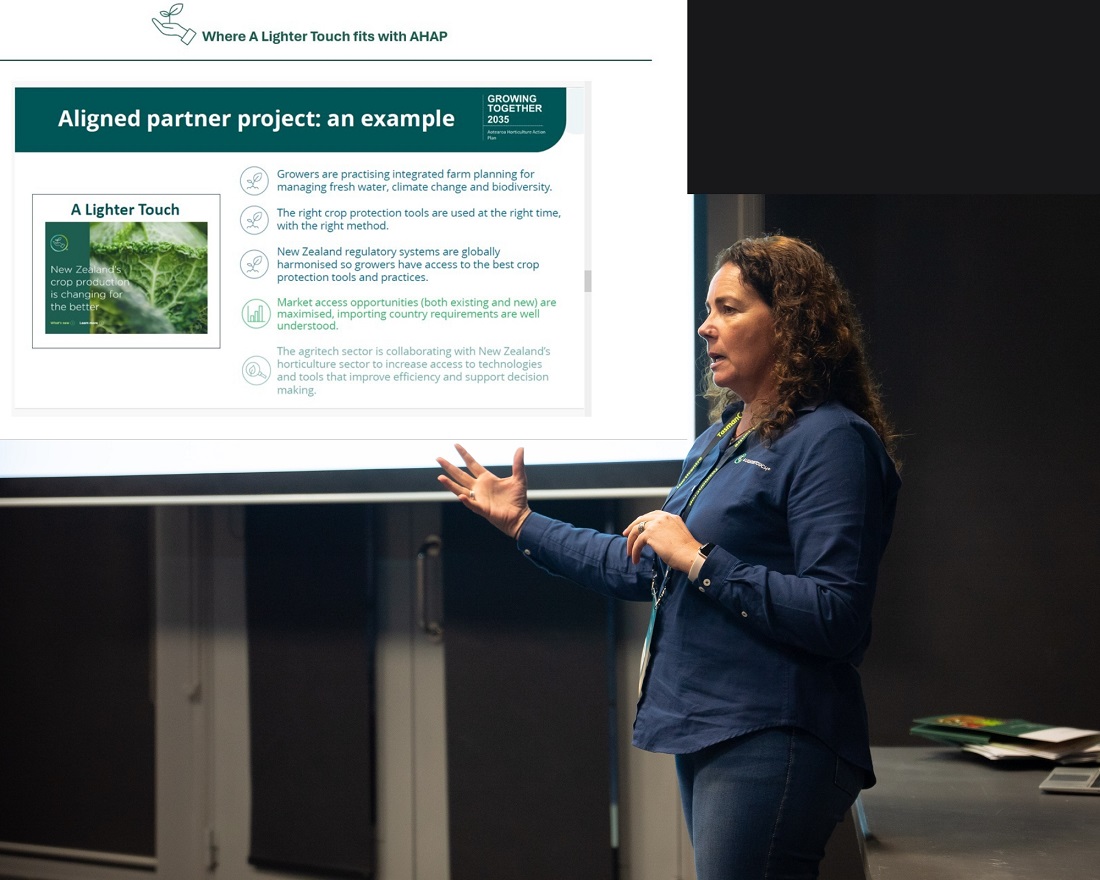The Aotearoa Horticulture Action Plan (AHAP) wants to see farmgate value of horticultural production double by 2035 in a way that benefits people and protects the environment – and A Lighter Touch is one of the contributors to that goal.
At last month’s Horticulture Conference in Tauranga, A Lighter Touch (ALT) programme manager Sarah Sorensen discussed how the ALT programme aligns with AHAP, even though ALT got underway three years before the action plan came into being.
The Aotearoa Horticulture Action Plan was launched in 2023 to provide a framework for sector transformation, to achieve the 2035 horticulture production goal while also improving prosperity for those working in the sector and protecting the environment.
It has five pillars which organisations and individuals involved in horticulture can align their effort and investment to as part of a united approach to grow the sector sustainably.

ALT Programme Manager Sarah Sorensen discusses how the programme aligns with the Aotearoa Horticulture Action Plan at the 2024 Horticulture Conference. Credit: HortNZ.
The A Lighter Touch programme aligns with three of AHAP’s pillars:
- grow sustainably,
- optimise value, and,
- underpinned by science and knowledge.
In terms of growing sustainably, A Lighter Touch is contributing to this AHAP pillar by supporting growers with tools and resources to introduce biodiversity into their farms and orchards and to move to an integrated pest management (IPM) approach to crop protection.
Growing sustainably is also about the right crop protection tools being used at the right time, with the right method. A Lighter Touch is supporting this through the addition of 24 new crop protection tools to the grower’s toolbox, five projects demonstrating more sustainable growing practices, and development of more than 25 grower resources helping to extend the knowledge of more sustainable growing practices.
The action plan recognizes the need for New Zealand regulatory systems to work in a way which enables growers to have efficient access to new crop protection tools and practices, and this is also an area of work ALT has focused on. ALT’s work to date has included a review of the barriers to bringing new biological products to market in New Zealand, and it is contributing to the current Ministry of Regulation review of the regulatory process.
In addition, ALT has a project underway with Vegetables New Zealand and Key Industries taking a new-to-New Zealand bioinsecticide through the regulatory process as a case study, with the aim of providing guidance to industry on how to navigate the complexity of the regulatory pathway in a faster and more cost-effective manner. If approved, the biopesticide would also provide a new crop protection tool for diamondback moth, a priority pest in brassica crops.
Optimising value is another AHAP pillar which ALT contributes to, through ensuring growers have the tools to meet market access requirements. ALT’s work includes funding and overseeing the updating of resistance management strategies to help pro-long the life of existing chemistry, and funding minor use trials, which identify and provide growers with new crop protection tools which meet market access requirements.
